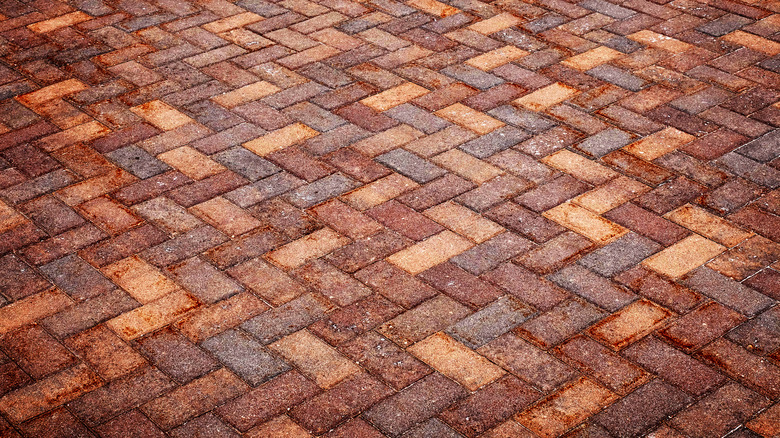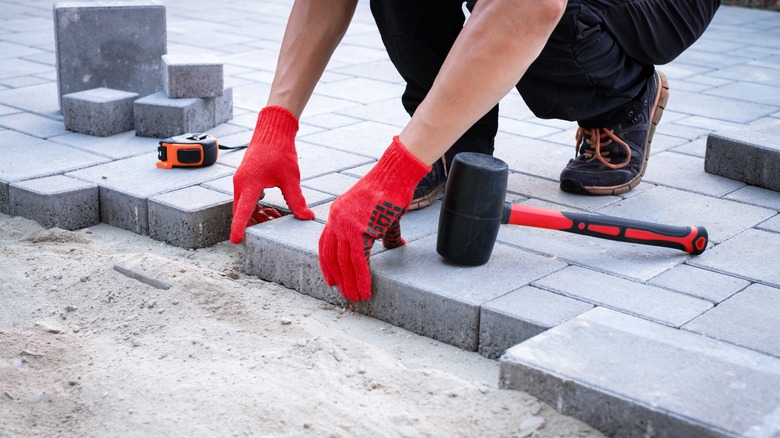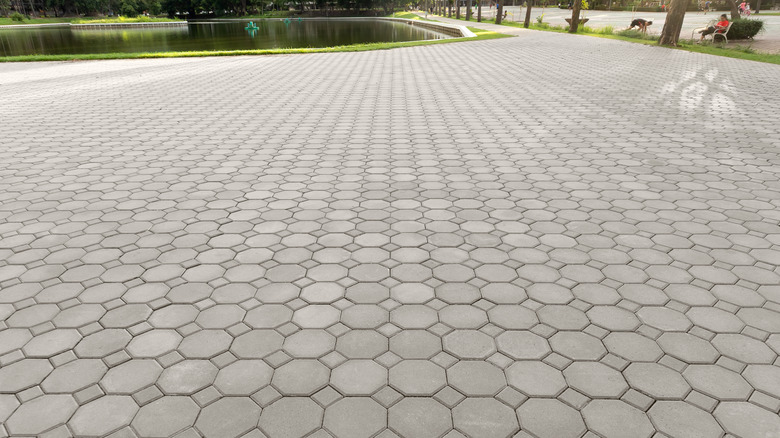What It Could Mean If Your Brick Patio Is Buckling
Brick pavers are a favorite among homeowners for terracing and patio space. These bricks perform the same basic function as a concrete slab, yet they can be used to effectively form a patterned exterior space that looks beautiful and well-maintained. Pavers have been popular for several years and, as a result, your brick patio may be suffering from buckling or other general movement issues.
In stark contrast to a concrete slab pour, which must often be torn out in sections or completely to make room for new, a brick patio setup is different, and many of the problems that come along with patio buckling can be remedied fairly easily. Earth, Turf, & Wood note several distinct causes of buckling with a brick paver patio, including poor drainage or improper edging, and they also offer some practical approaches that can be used to reset the space and flatten the buckled areas.
Tree roots can raise bricks
A common issue that affects brick patios is the underground invasion of tree roots. Trees are often planted in a scenic and shade-giving area next to paved or brick patios. This natural pairing is a landscaping classic when creating a new lawn and garden layout. However, as trees grow, they continue to produce a root mass that bulks out under the soil. Houzz notes that often the horizontal expansion of tree roots ends up displacing enough shallow soil to begin pressuring the pavers or concrete slab above. Shallow roots can quickly become detrimental to the structure of the fabrication. Fortunately, with a brick paver patio, you won't typically see damage to the bricks, rather, you'll begin to experience an unsightly buckling.
Digging along the edge of the brick patio to find the root is the easiest way to deal with the bulge. Cutting the root and severing the part underneath your bricks from the tree will start the process of deterioration, and eventually, the bricks will return to a flattened state. Alternatively, you can take up the bricks and chop out the entire root for a faster, yet more labor-intensive approach.
Old pavers can benefit from a simple refit
Houzz reports that pavers also buckle or droop along edges as a result of an old or improper installation process. In the past, installers typically used wooden frames to lay the paving bricks along the manufactured straight edges. However, over time the edges that fit snugly into the wooden ends can become looser, leading to a distinctive sagging that happens along the sides or transition spaces. If you're dealing with this type of sagging and buckling in your decking, it is likely coming after many years of great memories and heavy use. Brick pavers can last a lifetime with a combination of the right environment and an immaculate care routine, but many homeowners find that a typical lifespan lies somewhere around 25 years, explains JS Brick Corporation.
You might consider ripping up the brick paver deck and repaving it with a new layer of bricks. Installing a new brick patio is a surefire way to fix any serious problems. Alternatively, if the deck is still in good condition, you could pour a simple concrete footer along the edge to replace the wooden beam, then refit the affected bricks with the new support of the concrete.


